-
 By Anil Trivedi
By Anil Trivedi
- January 19, 2025
- 1 Comment
- Car Tyres, Tire Industry
The Crucial Role of Brake Pads in India’s Road Safety Landscape
Brake pads are a critical component of a vehicle’s braking system, ensuring that vehicles stop effectively and safely. In a country like India, with its unique mix of road conditions and traffic density, the importance of choosing the right brake pads cannot be overstated. This article explores the types of brake pads available in India, their significance, and their role in preventing road accidents.
What Are Brake Pads and How Do They Work?
Brake pads are components designed to press against a vehicle’s brake disc to create friction and slow down or stop the vehicle. This friction converts the vehicle’s kinetic energy into heat, enabling safe deceleration.
In India, where traffic congestion, diverse road conditions, and varying weather are everyday realities, brake pads are vital for:
- Ensuring Safety: Reliable brake pads prevent delayed stops and potential collisions.
- Adapting to Diverse Conditions: From smooth highways to bumpy rural roads, they must perform across a range of terrains.
- Handling Overloaded Vehicles: Overloading is common in India, and brake pads must withstand additional stress for safe braking.
Types of Brake Pads Available in India
Organic Brake Pads
Organic brake pads are the most common type of brake pad and are typically found on most passenger vehicles in India. They are made from a mixture of organic materials, such as rubber, Kevlar, and carbon fiber. These pads are designed for everyday use and provide a balanced performance for standard driving conditions commonly encountered on Indian roads.
Pros:
Affordable: Organic brake pads are the most affordable type of brake pad, making them a popular choice for budget-conscious drivers, especially in a price-sensitive market like India.
Quiet: They produce minimal brake noise, ensuring a smooth and quiet driving experience, which is particularly beneficial in urban and densely populated areas.
Low Dust: These pads generate less brake dust compared to other types, keeping the wheels cleaner and reducing maintenance efforts.
Cons:
Low Performance: They offer lower braking performance compared to other types, especially in high-performance driving situations or when navigating mountainous terrains like those found in Northern India.
Lower Heat Dissipation: Organic brake pads may not dissipate heat as effectively, leading to reduced braking performance in prolonged or intensive braking scenarios, such as during long-distance travel or heavy traffic in metropolitan areas.
In India, where most vehicles cater to daily commuting and city driving, organic brake pads serve as a reliable and economical option. However, for high-performance vehicles, heavy commercial vehicles, or those frequently driven in challenging terrains, other types of brake pads may be more suitable. Drivers should always consider their vehicle type, usage patterns, and driving conditions when selecting brake pads to ensure safety and optimal performance.
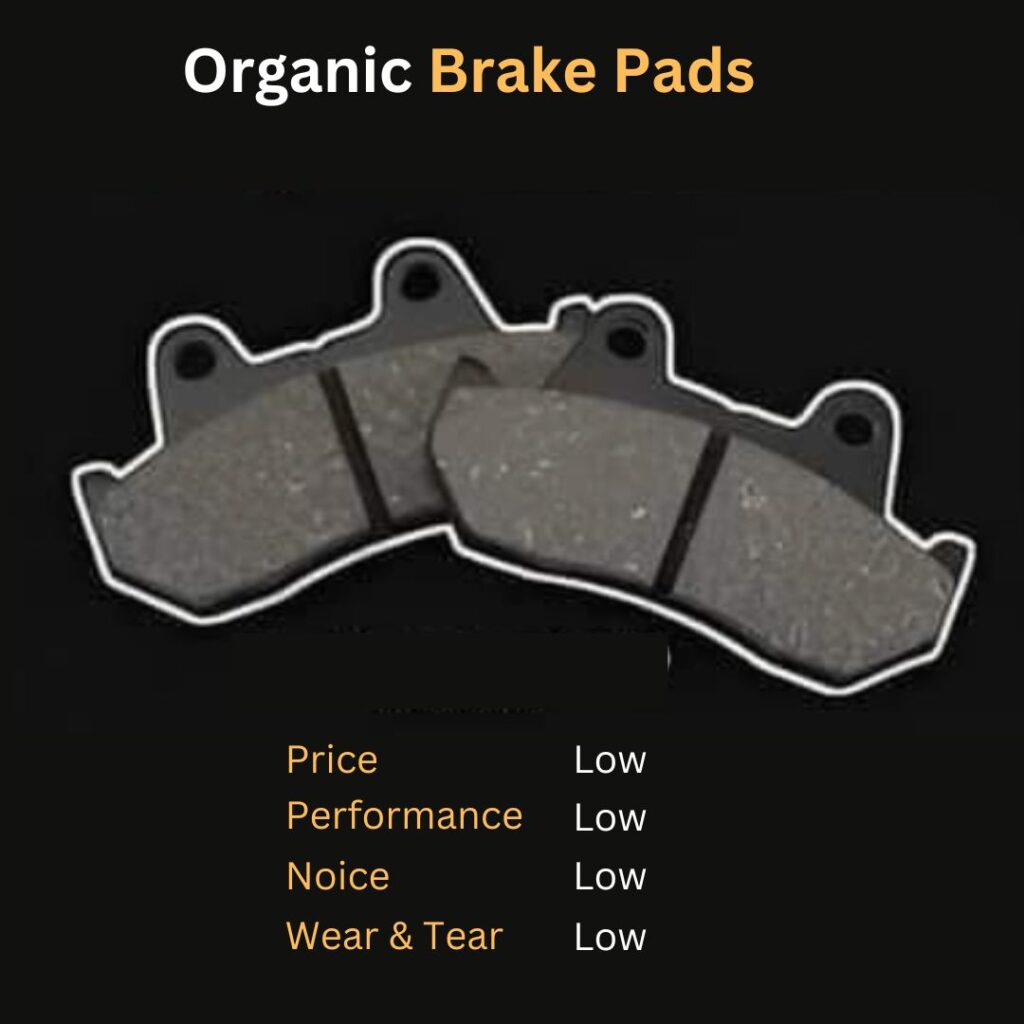
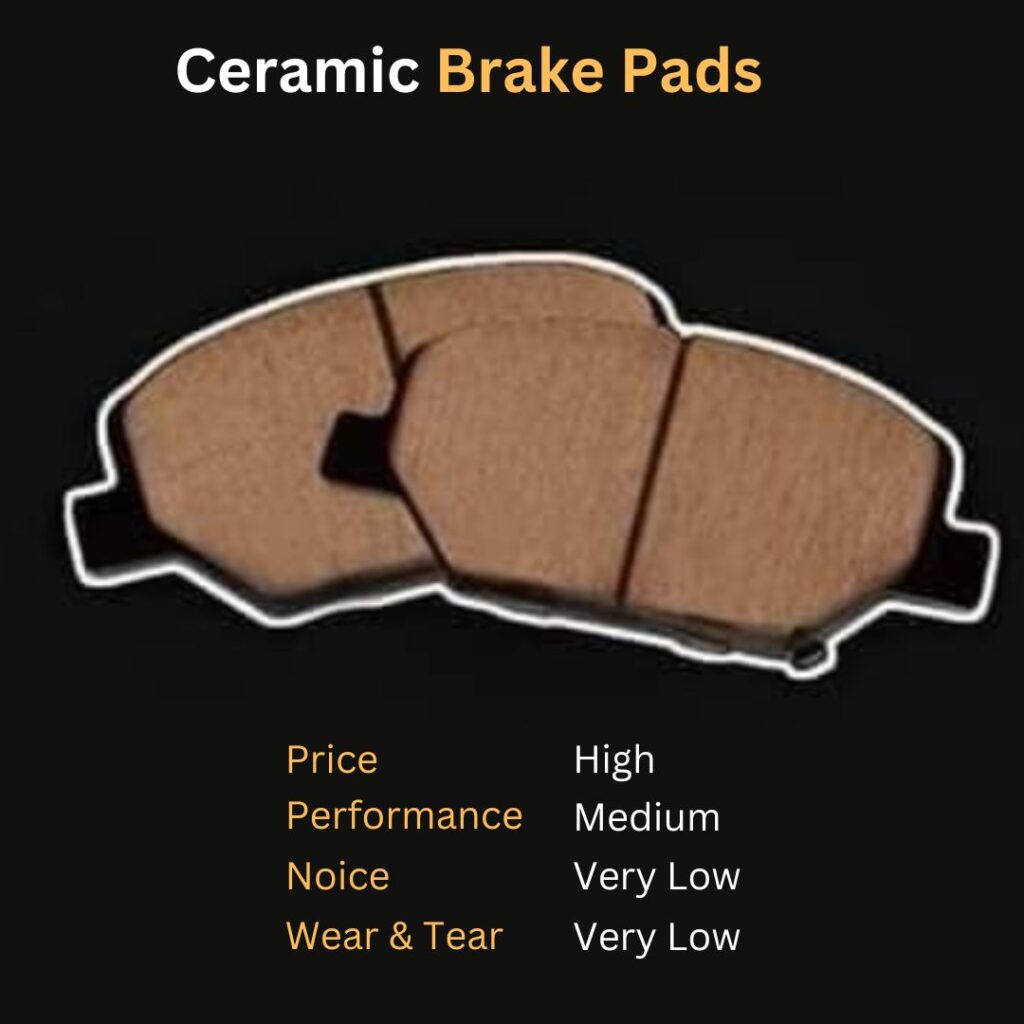
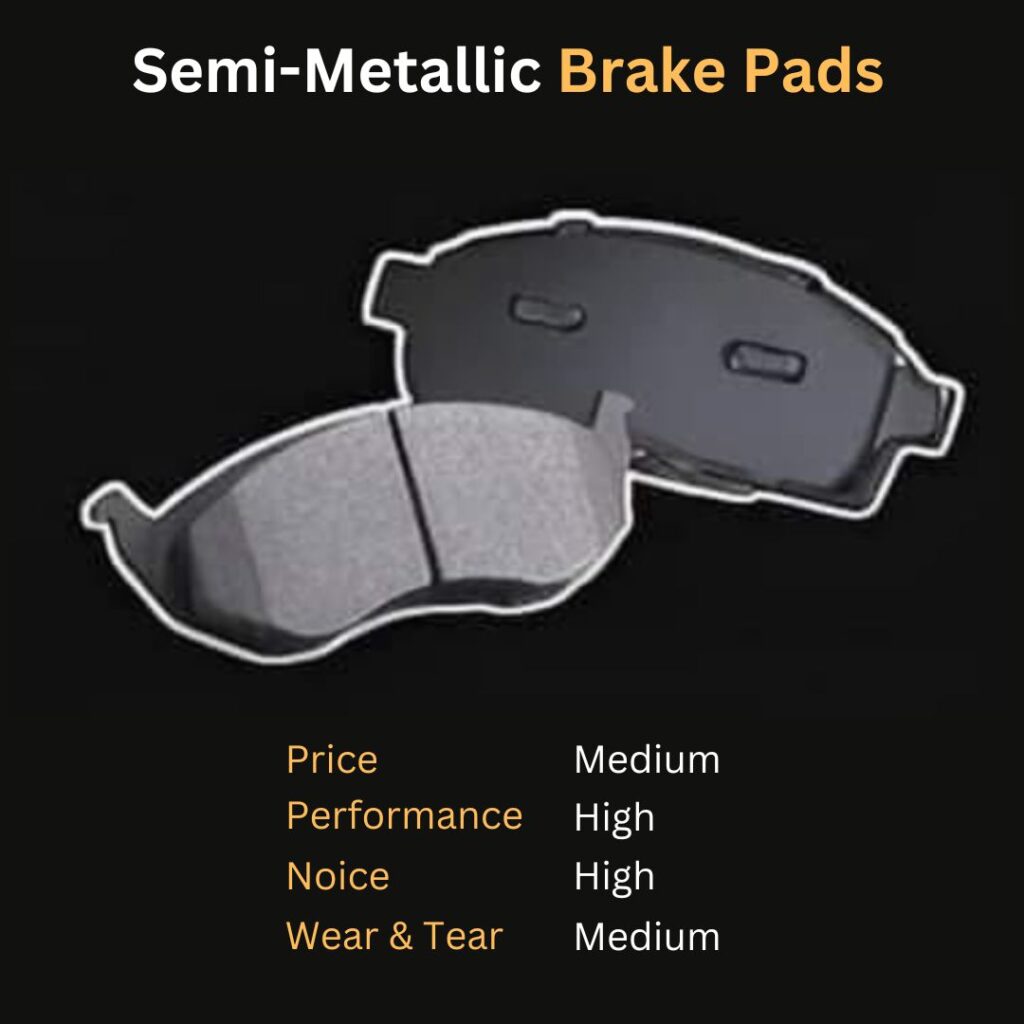
Ceramic Brake Pads
Ceramic brake pads are an advanced type of brake pad commonly found on mid-range to premium passenger vehicles in India. They are made from a mixture of ceramic fibers, fine copper fibers, and other durable materials. These pads are designed for improved performance, offering a blend of quiet operation, durability, and efficiency. They cater to drivers who seek a superior braking experience, especially in urban and highway driving conditions prevalent in India.
Pros:
- Durable: Ceramic brake pads have a longer lifespan compared to organic pads, making them a cost-effective option in the long run, especially for Indian drivers who log significant mileage annually.
- Low Dust: These pads produce significantly less brake dust, keeping the wheels cleaner and enhancing the overall aesthetics of the vehicle, which is appealing in urban settings.
- Quiet Performance: Ceramic pads generate minimal noise during braking, offering a refined and quiet driving experience, ideal for city commuters and highway travelers alike.
- Stable Performance: They maintain consistent braking performance over a wide temperature range, ensuring reliable stopping power in varied Indian conditions, from hot summer plains to colder hill regions.
Cons:
- Higher Cost: Ceramic brake pads are more expensive than organic pads, which might make them less accessible for budget-conscious drivers in India.
- Not Ideal for Extreme Conditions: While suitable for most driving scenarios, they may not perform as well as metallic brake pads in heavy-duty applications, such as for commercial vehicles or high-performance sports cars.
- Longer Break-In Period: Ceramic pads often require a longer bedding-in process to achieve their optimal performance, which may require careful handling during the initial usage period.
In India, where road conditions range from congested city streets to high-speed expressways, ceramic brake pads are an excellent choice for car owners seeking a balance of durability, low maintenance, and superior braking performance. They are particularly suitable for premium cars and vehicles used for frequent highway travel. However, for heavy commercial vehicles or off-road applications, other types of brake pads like metallic or semi-metallic may be more appropriate. Drivers should always evaluate their specific driving habits and road conditions to select the most suitable brake pad type for their vehicle, ensuring safety and reliability.
Semi-Metallic Brake Pads
Semi-metallic brake pads are a popular choice for a wide range of vehicles in India, particularly those requiring enhanced braking performance. These pads are composed of a mix of metal shavings (such as steel, iron, or copper) and other materials bonded with resin. Designed to offer improved braking capability, semi-metallic pads are suitable for more demanding driving conditions commonly encountered on Indian roads.
Pros:
- Enhanced Performance: Semi-metallic brake pads provide superior braking performance compared to organic pads, making them ideal for high-performance driving and challenging terrains, such as hilly regions in Northern India.
- Durable: The metallic composition makes these pads more durable, ensuring a longer lifespan even under intensive braking conditions, such as heavy city traffic or frequent highway travel.
- Better Heat Dissipation: These pads are effective in dissipating heat generated during braking, reducing the risk of brake fade in prolonged or heavy braking scenarios.
Cons:
- Moderate Noise: Semi-metallic pads can be noisier than organic brake pads, which might be noticeable during frequent use, especially in quiet residential or urban areas.
- Increased Brake Dust: They tend to generate more brake dust, which can require additional maintenance to keep the wheels clean and maintain the vehicle’s aesthetic appeal.
- Higher Cost: While more affordable than ceramic brake pads, semi-metallic options are generally more expensive than organic pads, which could be a consideration for budget-conscious Indian customers.
Why Choose Semi-Metallic Brake Pads in India?
Semi-metallic brake pads strike a balance between cost and performance, making them a practical choice for vehicles driven in diverse Indian conditions. They are especially suitable for drivers who frequently travel long distances, encounter hilly or mountainous roads, or operate heavier vehicles like SUVs and light commercial vehicles.
In India, where road conditions and driving styles vary widely, semi-metallic brake pads are a versatile option. However, for those seeking quieter and cleaner braking for daily urban commuting, organic pads may suffice. On the other hand, for high-performance requirements or challenging terrains, semi-metallic pads are a dependable choice. As always, selecting the right brake pads depends on vehicle type, driving habits, and the specific conditions in which the vehicle operates.
Low-Metallic NAO Brake Pads
Low-Metallic NAO (Non-Asbestos Organic) brake pads are a popular choice for vehicles requiring enhanced braking performance while maintaining cost-effectiveness. These pads are composed of organic materials, such as resin, combined with a small percentage of metal—typically copper or steel—to improve heat transfer and braking efficiency. This combination makes them suitable for a range of driving conditions encountered in India, offering a balance between performance and durability.
Pros:
- Enhanced Braking Performance: The metal content in low-metallic NAO brake pads provides superior braking power compared to organic pads, making them a better option for vehicles used in diverse conditions, such as long highway trips or hilly regions in Northern and Southern India.
- Improved Heat Dissipation: The metal components help in dissipating heat more effectively, ensuring consistent braking performance during prolonged or heavy braking, which is essential in congested metropolitan traffic or during long-distance travel.
- Durability: Low-metallic pads tend to have a longer lifespan than organic pads, reducing the frequency of replacements and providing better value over time.
Cons:
- Higher Noise Levels: These pads may produce more noise during braking compared to organic pads, which could be a concern for drivers who prioritize a quieter driving experience.
- Increased Brake Dust: The metallic content can result in more brake dust accumulation on the wheels, potentially requiring frequent cleaning and maintenance.
- Slightly Expensive: Low-metallic NAO pads are more expensive than organic pads, which may make them less appealing for budget-conscious drivers in India.
Suitability for Indian Customers:
In India, where driving conditions can vary from city commutes to mountainous terrains and long highway stretches, low-metallic NAO brake pads strike a balance between affordability and performance. They are well-suited for mid-range sedans, compact SUVs, and vehicles used in mixed driving conditions. While they may not be the best choice for high-end or sports vehicles, their enhanced braking ability and durability make them an ideal option for drivers seeking better performance than organic pads without the higher costs associated with premium alternatives.
Drivers should evaluate their vehicle type, driving habits, and terrain before opting for low-metallic NAO brake pads to ensure optimal safety and performance.
Performance Brake Pads (Carbon-Ceramic Brake Pads)
Performance brake pads, often made from advanced materials such as carbon-ceramic composites, are engineered for superior braking performance. These brake pads are typically found in high-performance vehicles, sports cars, and luxury vehicles in India. Their innovative design ensures excellent stopping power, durability, and heat resistance, making them suitable for demanding driving conditions.
Pros:
- Exceptional Performance: Carbon-ceramic brake pads deliver superior braking performance, ensuring quicker stops and enhanced control during high-speed or performance driving, ideal for Indian highways and expressways.
- Heat Resistance: These pads excel in heat dissipation, maintaining consistent braking efficiency even during prolonged or aggressive use, such as steep descents in hilly regions or long-distance drives.
- Durability: Known for their long lifespan, carbon-ceramic brake pads can endure high temperatures and extended wear, reducing the frequency of replacements and overall maintenance costs over time.
- Reduced Brake Fade: Their ability to maintain braking power under high heat conditions minimizes brake fade, ensuring reliable performance even in heavy traffic or when frequently braking in urban areas.
Cons:
- High Cost: Carbon-ceramic brake pads are significantly more expensive than other types, which might be a deterrent for budget-conscious Indian consumers.
- Not Ideal for Everyday Use: While excellent for high-performance scenarios, these pads may not reach optimal performance at lower temperatures, making them less suitable for short city commutes or light driving.
- Specialized Installation: They often require professional installation and are best paired with compatible high-performance brake systems, which may add to the overall cost.
In India, where driving conditions vary from dense urban traffic to challenging mountainous terrains, carbon-ceramic brake pads are best suited for drivers seeking high performance, such as owners of sports cars, premium SUVs, or vehicles used for spirited driving. These brake pads also cater to individuals frequently navigating regions with steep inclines, such as the Western Ghats or Northern Himalayan areas.
While their cost might be a limitation for the average commuter, their unparalleled performance and durability make them a worthwhile investment for enthusiasts and professionals. Drivers should evaluate their specific driving needs and vehicle capabilities to determine if carbon-ceramic brake pads are the right choice for them.
How Brake Pads Contribute to Road Accidents in India
Worn-Out Brake Pads: Neglected brake pads lose their frictional capacity, leading to longer stopping distances and increasing the risk of collisions.
Substandard Products: The use of low-quality brake pads, often chosen for cost savings, can compromise braking efficiency and reliability.
Delayed Maintenance: Many vehicle owners in India delay regular inspections, unaware of the warning signs of brake pad wear, such as squealing noises or reduced braking performance.
Overloading: Overloaded vehicles place excessive strain on braking systems, causing faster wear of brake pads and reducing braking efficiency.
Choosing the Best Brake Pads for Indian Roads
When selecting brake pads for Indian vehicles, consider the specific vehicle type, usage patterns, and driving conditions to ensure safety and optimal performance. Here’s a guide:
Passenger Cars
- Recommended: Ceramic or semi-metallic pads.
- Reason: Ceramic pads are quiet, long-lasting, and ideal for everyday city driving. Semi-metallic pads are better suited for more aggressive driving, offering improved heat resistance and braking power.
Mid-Range Sedans
- Recommended: Ceramic pads.
- Reason: These pads offer a perfect balance of comfort, low noise, and consistent performance, making them ideal for city commutes and occasional highway use.
Compact SUVs
- Recommended: Semi-metallic or ceramic pads.
- Reason: Semi-metallic pads provide enhanced durability for heavier vehicles and mixed driving conditions, while ceramic pads are suitable for drivers prioritizing quietness and longevity.
Vehicles for Mixed Driving Conditions
- Recommended: Semi-metallic or hybrid pads.
- Reason: Semi-metallic pads deliver reliable performance in varied terrains, from urban roads to rough patches, while hybrid pads combine durability and reduced noise, ensuring versatility.
High-Performance Vehicles, Sports Cars, and Luxury Vehicles
- Recommended: Carbon-ceramic pads.
- Reason: Carbon-ceramic pads deliver superior braking performance, exceptional heat resistance, and durability, ensuring precise control under extreme driving conditions like high speeds, mountainous terrains, or spirited driving.
Commercial Vehicles
- Recommended: Semi-metallic pads.
- Reason: Designed to handle heavy loads, frequent braking, and demanding usage typical in logistics and transportation sectors.
Motorcycles
- Recommended: Organic or semi-metallic pads.
- Reason: Organic pads are ideal for lightweight motorcycles due to their affordability and smooth performance. Semi-metallic pads are better suited for heavier bikes or riders in challenging conditions, offering enhanced durability and stopping power.
By aligning brake pad choice with vehicle type and driving habits, Indian drivers can ensure safety, reduce maintenance costs, and enhance their driving experience across diverse road conditions.
Maintenance Tips for Better Safety
- Regular Inspections: Check brake pads every 10,000 to 15,000 km, depending on your driving habits and vehicle type.
- Replace on Time: Replace worn-out pads promptly to maintain braking efficiency.
- Choose Quality: Invest in reputable brands that meet safety standards rather than opting for cheaper alternatives.
- Educate Drivers: Awareness about brake pad maintenance can significantly reduce accidents.
Conclusion
Brake pads are a small yet crucial part of a vehicle that plays a big role in road safety. For Indian drivers, the choice of brake pads depends on factors such as vehicle type, road conditions, and driving habits. While ceramic pads are ideal for urban commuters, semi-metallic pads are the go-to choice for heavy vehicles.
Ultimately, maintaining brake pads and choosing high-quality products can save lives. With India’s rising accident rates, it’s essential to prioritize safety over cost, ensuring a safer journey for everyone on the road.



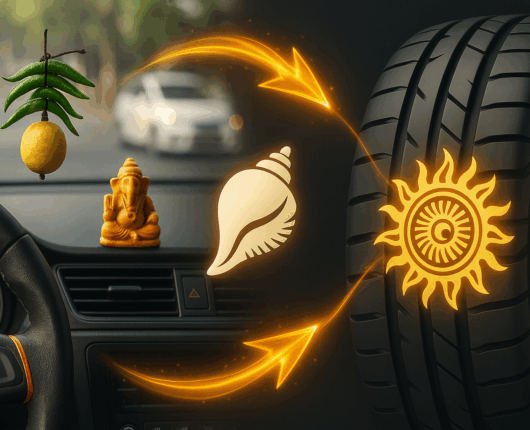
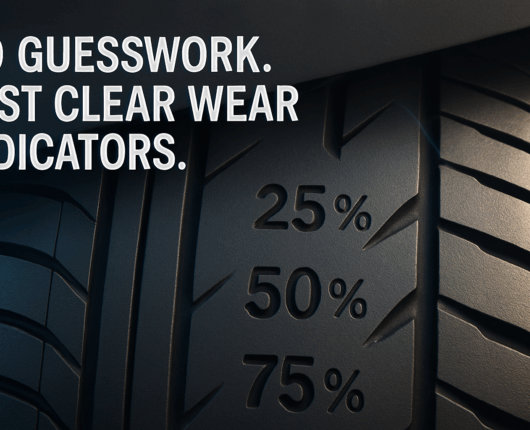

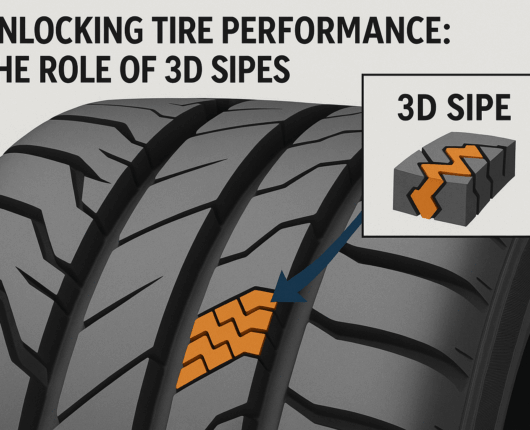








1 Comment